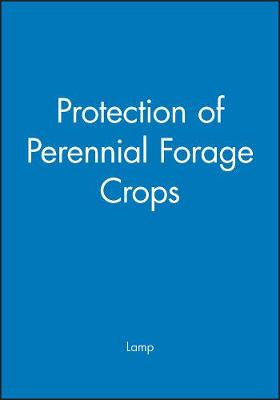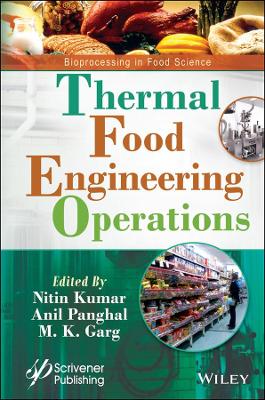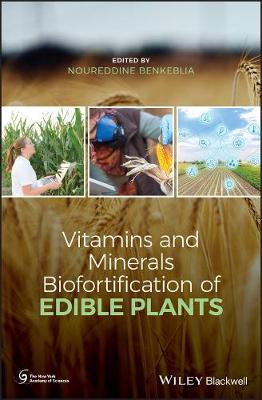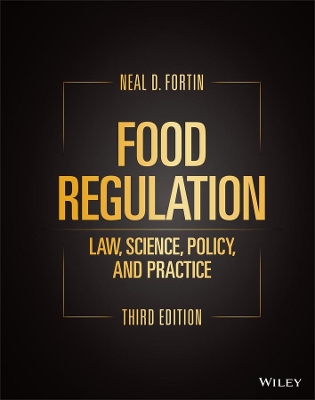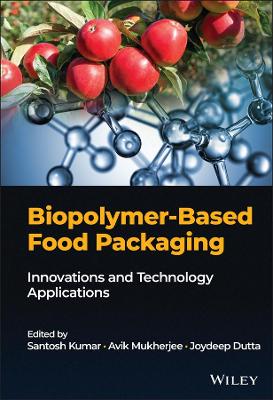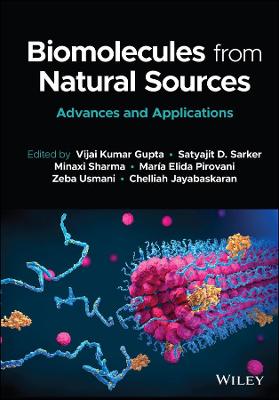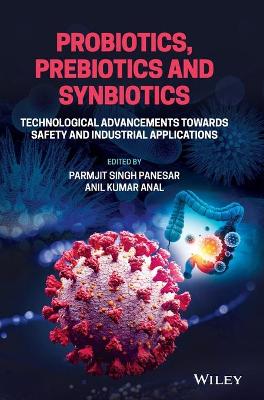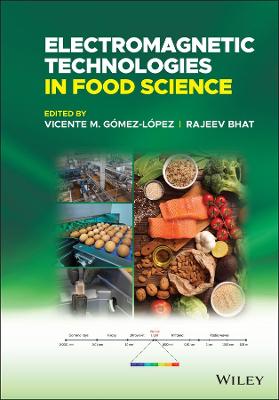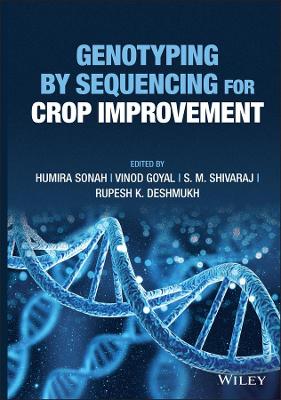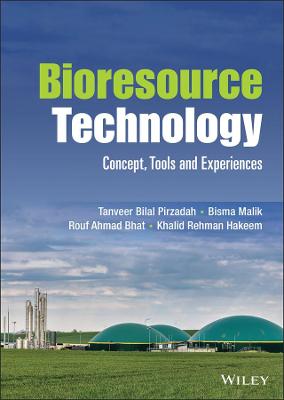Wheat
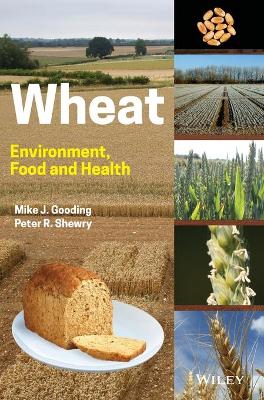 -15%
portes grátis
-15%
portes grátis
Wheat
Environment, Food and Health
Shewry, Peter R.; Gooding, Mike J.
John Wiley & Sons Inc
02/2022
432
Dura
Inglês
9781119652557
15 a 20 dias
938
Acknowledgements xvi
1 Wheat and Humans: An Introduction to the Development and Utilisation of the Wheat Crop 1
1.1 Wheat Production in the Past and Present 1
1.1.1 Co-Evolution of Wheat Production and Human Societies 1
1.1.2 Wheat Supply and Demand 4
1.1.3 Wheat Adaptation 7
1.2 The Wheat Plant 9
1.2.1 Vegetative Phase 14
1.2.1.1 Germination 14
1.2.1.2 Leaves 15
1.2.1.3 Tillers 16
1.2.1.4 Roots 16
1.2.2 Reproductive Phase 16
1.2.2.1 Stem Extension 17
1.2.2.2 Booting and Ear Emergence 18
1.2.2.3 Anthesis 18
1.2.2.4 Grain Growth 19
1.3 Wheat Evolution and Migration 20
1.3.1 Origin in the Fertile Crescent 20
1.3.2 Wild Wheats 21
1.3.3 Domestication 22
1.3.4 The Spread of Wheat Cultivation 23
1.3.5 Increases in Harvest Index 24
1.4 Wheat as Food 25
1.4.1 The Development of Milling and Baking 25
1.4.2 The Cultural Significance of Bread 28
1.4.3 Bread Today 30
1.4.4 The Fall and Rise of Whole Grain Foods 31
1.4.5 Producing White and Wholemeal Flours by Roller Milling 33
1.5 Grain Quality 33
1.5.1 Grain Size, Shape, and Specific Weight 33
1.5.2 Endosperm Texture 35
1.5.3 Water Absorption 35
1.5.4 Gluten 36
1.5.4.1 The Origin and Properties of Gluten 36
1.5.4.2 Gluten and Health 37
1.5.4.3 Dough Properties that Determine Processing Quality 37
1.5.4.4 Importance of Total Protein Concentration 38
1.5.4.5 Importance of Protein Quality 40
1.5.4.6 Measurement of Dough Rheology and Quality 40
1.5.5 Other Factors Affecting the Acceptability of Wheat for Different End-Uses 41
1.5.5.1 Alpha-Amylase Activity 41
1.5.5.2 Seed Coat Colour 42
1.6 Further Chapters 42
References 42
2 A 'Good' Soil 52
2.1 Soils for Wheat Production 53
2.1.1 Soil Taxonomy 53
2.1.2 Soil Texture 54
2.1.3 Soil Organic Matter 56
2.1.4 Soil pH and Sodicity 58
2.1.5 Salinity 60
2.1.6 Soil Structure 61
2.1.7 Soil Depth 63
2.1.8 Land Classification 63
2.2 The Rise of the Plough 64
2.3 Soil Change and Land Degradation 66
2.3.1 Loss of Soil 66
2.3.2 Organic Matter Loss and Amendment 70
2.3.3 Acidification and Liming 74
2.3.3.1 Calcium as a Nutrient 75
2.3.4 Depletion of Micronutrients 76
2.3.4.1 Boron 76
2.3.4.2 Chlorine 76
2.3.4.3 Copper 77
2.3.4.4 Iron 77
2.3.4.5 Manganese 78
2.3.4.6 Molybdenum 78
2.3.4.7 Nickel 78
2.3.4.8 Zinc 79
2.3.5 Salinisation 79
2.3.6 The Weed Seedbank 80
2.4 Systems for Protecting the Soil 82
2.4.1 Conservation Tillage 82
2.4.2 Organic Farming 84
2.4.3 Conservation Agriculture 85
2.5 Land-Use Efficiency and Soils 86
References 87
3 Ample Water 101
3.1 The Water Requirement of Wheat 103
3.1.1 Germination and Seedling Emergence 103
3.1.2 Transpiration 104
3.1.3 Root Growth 108
3.1.4 Reproductive Growth and Grain Filling 109
3.2 Available Water 113
3.2.1 Soil Water 113
3.2.2 Rainfall 114
3.2.2.1 Rainfall Shortage 115
3.2.2.2 Rainfall Excess 116
3.2.3 Irrigation 117
3.2.3.1 Surface Irrigation 119
3.2.3.2 Overhead Irrigation 119
3.2.3.3 Sources of Irrigation Water 120
3.3 Water Use Efficiency 122
3.3.1 Reducing Evaporation Losses 122
3.3.2 Increasing Rooting at Depth 122
3.3.3 Deficit Irrigation 124
3.3.4 Osmotic Adjustment 124
3.3.5 Transpiration Efficiency 125
3.3.6 Potassium 125
3.4 Land-Use Efficiency and Water 127
References 128
4 Mild Temperatures 139
4.1 The Temperature Requirement for Wheat 140
4.2 'Waiting for Fine Times' (Snape et al. 2001) 142
4.2.1 Dormancy 142
4.2.2 Cold Acclimation 143
4.2.3 Vernalisation 144
4.2.4 Photoperiodism 145
4.2.5 Earliness per se 147
4.3 Vegetative Growth and Development 147
4.3.1 Germination and Emergence 147
4.3.2 Leaves 148
4.3.3 Tillers 150
4.3.4 Roots 150
4.4 Reproductive Growth and Development 151
4.4.1 Spikelet Formation and Stem Extension 151
4.4.2 Meiosis and Anthesis 151
4.4.2.1 Heat Stress 151
4.4.2.2 Cold Stress 154
4.4.3 Grain Filling and Quality 154
4.5 Global Warming 156
References 157
5 Sunshine 166
5.1 The Light Requirement of Wheat 170
5.1.1 Light Quantity 170
5.1.2 Light Quality 175
5.2 Light Interception 176
5.3 Improving Radiation Use for Increased Land-Use Efficiency 179
References 181
6 Canopy Management 186
6.1 Crop Establishment 186
6.1.1 Sowing Date 186
6.1.2 Plant Populations and Sowing Rate 188
6.2 Crop Nutrition 193
6.2.1 Nitrogen 194
6.2.1.1 The Requirement for Nitrogen 194
6.2.1.2 Nitrogen Fixation 201
6.2.1.3 Nitrogen Efficiencies and Losses 205
6.2.1.4 Recovering and Recycling Fixed Nitrogen 211
6.2.1.5 Optimising Nitrogen Application 214
6.2.2 Phosphorus 218
6.2.3 Sulphur 221
6.2.4 Magnesium 224
6.3 Diseases and their Control 224
6.3.1 The Rusts 226
6.3.1.1 Yellow Rust 226
6.3.1.2 Leaf Rust 227
6.3.1.3 Stem Rust 227
6.3.2 The Blotch Diseases 228
6.3.2.1 Septoria tritici Blotch 228
6.3.2.2 Septoria nodorum Blotch 229
6.3.2.3 Tan Spot 230
6.3.3 Diseases Contributing to Mycotoxins in the Grain 230
6.3.3.1 Ergot 230
6.3.3.2 Fusarium Head Blight (FHB) 231
6.3.4 Fungicides and Fungicide Use 232
6.4 Land-use Efficiency and Canopy Management 238
References 240
7 The Structure and Composition of the Wheat Grain 263
7.1 Grain Development 263
7.1.1 Fertilisation 263
7.1.2 Post-fertilisation 265
7.1.3 Endosperm Development 265
7.1.4 Embryo Development 267
7.2 Structure of the Mature Grain 268
7.3 Major Components of the Mature Grain 271
7.3.1 Carbohydrates 272
7.3.1.1 Monosaccharides, Disaccharides, and Oligosaccharides 272
7.3.1.2 Starch 272
7.3.1.3 Cell Wall Polysaccharides 274
7.3.1.4 Arabinogalactan Peptide (AGP) 276
7.3.2 Proteins 277
7.3.2.1 Grain Protein Content (GPC) 277
7.3.2.2 Grain Protein Deviation 277
7.3.2.3 Essential Amino Acid Composition 278
7.3.2.4 Wheat Grain Proteins 279
7.3.2.5 Gluten Proteins: Gliadins and Glutenins 280
7.3.2.6 Other Proteins of the Prolamin Superfamily 287
7.3.2.7 Other Storage Proteins 291
7.3.2.8 Other Inhibitors and Putative Defensive Proteins 292
7.3.2.9 Xylanases and Xylanase Inhibitors 293
7.3.3 Lipids 293
7.3.4 Minor Components: Minerals, Vitamins, and Phytochemicals 294
7.4 Gradients in Composition within the Starchy Endosperm 295
References 296
8 Components and Mechanisms that Determine Grain Processing Properties 301
8.1 Grain Hardness and Vitreousness 301
8.1.1 Friabilin and Puroindolines 302
8.1.2 Other Proteins that Affect Grain Hardness 303
8.1.3 Role of Lipids 304
8.1.4 When and How is Grain Softness Established? 304
8.1.5 Vitreousness 305
8.2 Dough Viscoelasticity 305
8.2.1 Wheat Gluten and Dough Viscoelasticity 305
8.2.2 HMW Subunits, Dough Strength, and Breadmaking Quality 307
8.2.3 Effects of Other Gluten Proteins on Dough Quality 308
8.2.4 Molecular Basis for the Role of the HMW Subunits in Gluten Structure and Properties 308
8.3 Functional Properties of Starch 309
8.3.1 Starch Gelatinisation 310
8.3.2 Starch Damage 310
8.3.3 Starch Retrogradation and Staling 311
8.3.4 Waxy and High Amylose Starches 311
8.4 Other Functional Components 311
8.4.1 Arabinoxylan 311
8.4.2 Functional Properties of Lipids in Dough 312
8.4.3 Water Absorption: Effects of Starch, Protein, and Fibre 312
8.5 Effects of Crop Nutrition and Environmental Factors on Grain Composition and Quality 313
8.5.1 Nitrogen Fertilisation 313
8.5.2 Sulphur Availability 314
8.5.2.1 Sulphur Nutrition, Asparagine Content, and Acrylamide Formation 315
8.5.3 Temperature and Water Availability 316
8.5.4 Carbon Dioxide Concentration 317
References 318
9 The Role of Wheat in Diet and Health 321
9.1 Contribution of Wheat to the Human Diet 321
9.2 Dietary Fibre 321
9.2.1 Proposed and Approved Benefits of Dietary Fibre 321
9.2.2 Wheat Grain Fibre 324
9.2.2.1 Cell Wall Polysaccharides 324
9.2.2.2 Fructans 325
9.2.2.3 Resistant Starch 325
9.2.2.4 High Amylose Starch 325
9.2.3 Mechanism of Action of Dietary Fibre 326
9.2.3.1 Role of Food Structure and Breakdown 326
9.2.3.2 Role of Luminal Viscosity 327
9.2.3.3 Role of Prebiotic Activity 327
9.3 Micronutrients and Phytochemicals 327
9.3.1 Iron and Zinc 327
9.3.2 Selenium 330
9.3.3 B Vitamins 330
9.3.4 Phytochemicals 331
9.3.4.1 Phenolics 331
9.3.4.2 Terpenoids 333
9.3.5 Betaine and Choline 333
9.3.6 Health Benefits of Phytochemicals 335
9.3.7 Environmental Effects on the Concentrations of Phytochemicals and Minerals 337
9.4 Adverse Effects of Wheat on Health 338
9.4.1 Wheat as Part of the Western Diet 338
9.4.2 Allergy and Intolerance to Wheat 338
9.4.3 Allergy 338
9.4.4 Coeliac Disease and Related Intolerances 340
9.4.5 Other Adverse Reactions to Wheat 341
9.4.6 FODMAPs and Gastro-Intestinal Disorders 341
9.4.7 Bloating 342
9.5 Producing Healthier Wheat Products by Processing 342
9.5.1 Debranning 342
9.5.2 Flour Particle Size 342
9.5.3 Fermentation 343
9.5.4 Sprouting 344
9.5.5 Enzyme Treatments 344
9.5.6 Conclusions: Processing for Improved Health Benefits 344
9.6 Fungal Toxins in Wheat 345
9.6.1 Ergot 345
9.6.2 Fusarium Mycotoxins 345
9.6.3 Mycotoxins from Storage Fungi 347
9.6.4 Removing Fungal Toxins by Processing 347
References 348
10 Wheat Genetics and Improvement 357
10.1 Genetic Background to Wheat Breeding 357
10.2 Technologies for Wheat Genetics and Breeding 358
10.2.1 Aneuploid Lines 358
10.2.2 Doubled Haploid Lines, Recombinant Inbred Lines, and Near-Isogenic Lines 359
10.2.3 Marker-Assisted Selection (MAS) 360
10.2.4 Genome-Wide Association Genetics (GWAS) and Genomic Selection (GS) 360
10.2.5 Intermated Populations (MAGIC and NAM) 361
10.2.6 Hybrid Wheat 361
10.2.7 Perennial Wheat 362
10.3 Sources and Exploitation of Genetic Diversity 363
10.3.1 Gene Banks 363
10.3.2 Land Races 363
10.3.3 Wild Relatives 364
10.3.4 Rye Translocations 365
10.3.5 Synthetic Wheats 366
10.3.6 Ancient Wheats 366
10.3.7 Tritordeum: A Novel Cereal Derived from Wheat 367
10.3.8 Mutagenesis and TILLING 367
10.4 Impact of Breeding on Genetic Diversity in Wheat 369
10.4.1 Minerals 369
10.4.2 Protein Content 370
10.4.3 Wheat Proteins that Trigger Adverse Reactions 371
10.4.4 Dietary Fibre 371
10.4.5 Other Components 372
10.5 Are Ancient Wheats More Healthy than Modern Wheats? 372
10.5.1 Wheat Proteins that Trigger Adverse Reactions 373
10.5.2 Other Components 373
10.6 Wheat Biotechnology 374
10.6.1 Genetic Transformation 374
10.6.1.1 DNA Delivery 375
10.6.1.2 Selection of Transformed Plants 375
10.6.1.3 Targeting and Regulating Gene Expression 376
10.6.1.4 Gene Editing 376
10.6.2 Regulation, Impact and Consumer Acceptance of Genetic Transformation and Genome Editing in Wheat and Other Crops 377
10.7 Applications of Biotechnology to Wheat Improvement 378
10.7.1 Input Traits 379
10.7.1.1 Potential Yield 379
10.7.1.2 Improving Nitrogen-Use Efficiency (NUE) 379
10.7.1.3 Resistance to Abiotic Stresses 380
10.7.1.4 Resistance to Pests and Pathogens 380
10.7.2 Output Traits: Grain Quality 380
10.7.2.1 Dough Strength 380
10.7.2.2 Grain Texture 382
10.7.2.3 Increasing Mineral Micronutrients 382
10.7.2.4 Reducing Adverse Effects 383
10.7.2.5 'Improving' Grain Polysaccharides 384
References 385
11 Epilogue: Wheat in Conflict and in Peace 394
Reference 396
Index 397
Acknowledgements xvi
1 Wheat and Humans: An Introduction to the Development and Utilisation of the Wheat Crop 1
1.1 Wheat Production in the Past and Present 1
1.1.1 Co-Evolution of Wheat Production and Human Societies 1
1.1.2 Wheat Supply and Demand 4
1.1.3 Wheat Adaptation 7
1.2 The Wheat Plant 9
1.2.1 Vegetative Phase 14
1.2.1.1 Germination 14
1.2.1.2 Leaves 15
1.2.1.3 Tillers 16
1.2.1.4 Roots 16
1.2.2 Reproductive Phase 16
1.2.2.1 Stem Extension 17
1.2.2.2 Booting and Ear Emergence 18
1.2.2.3 Anthesis 18
1.2.2.4 Grain Growth 19
1.3 Wheat Evolution and Migration 20
1.3.1 Origin in the Fertile Crescent 20
1.3.2 Wild Wheats 21
1.3.3 Domestication 22
1.3.4 The Spread of Wheat Cultivation 23
1.3.5 Increases in Harvest Index 24
1.4 Wheat as Food 25
1.4.1 The Development of Milling and Baking 25
1.4.2 The Cultural Significance of Bread 28
1.4.3 Bread Today 30
1.4.4 The Fall and Rise of Whole Grain Foods 31
1.4.5 Producing White and Wholemeal Flours by Roller Milling 33
1.5 Grain Quality 33
1.5.1 Grain Size, Shape, and Specific Weight 33
1.5.2 Endosperm Texture 35
1.5.3 Water Absorption 35
1.5.4 Gluten 36
1.5.4.1 The Origin and Properties of Gluten 36
1.5.4.2 Gluten and Health 37
1.5.4.3 Dough Properties that Determine Processing Quality 37
1.5.4.4 Importance of Total Protein Concentration 38
1.5.4.5 Importance of Protein Quality 40
1.5.4.6 Measurement of Dough Rheology and Quality 40
1.5.5 Other Factors Affecting the Acceptability of Wheat for Different End-Uses 41
1.5.5.1 Alpha-Amylase Activity 41
1.5.5.2 Seed Coat Colour 42
1.6 Further Chapters 42
References 42
2 A 'Good' Soil 52
2.1 Soils for Wheat Production 53
2.1.1 Soil Taxonomy 53
2.1.2 Soil Texture 54
2.1.3 Soil Organic Matter 56
2.1.4 Soil pH and Sodicity 58
2.1.5 Salinity 60
2.1.6 Soil Structure 61
2.1.7 Soil Depth 63
2.1.8 Land Classification 63
2.2 The Rise of the Plough 64
2.3 Soil Change and Land Degradation 66
2.3.1 Loss of Soil 66
2.3.2 Organic Matter Loss and Amendment 70
2.3.3 Acidification and Liming 74
2.3.3.1 Calcium as a Nutrient 75
2.3.4 Depletion of Micronutrients 76
2.3.4.1 Boron 76
2.3.4.2 Chlorine 76
2.3.4.3 Copper 77
2.3.4.4 Iron 77
2.3.4.5 Manganese 78
2.3.4.6 Molybdenum 78
2.3.4.7 Nickel 78
2.3.4.8 Zinc 79
2.3.5 Salinisation 79
2.3.6 The Weed Seedbank 80
2.4 Systems for Protecting the Soil 82
2.4.1 Conservation Tillage 82
2.4.2 Organic Farming 84
2.4.3 Conservation Agriculture 85
2.5 Land-Use Efficiency and Soils 86
References 87
3 Ample Water 101
3.1 The Water Requirement of Wheat 103
3.1.1 Germination and Seedling Emergence 103
3.1.2 Transpiration 104
3.1.3 Root Growth 108
3.1.4 Reproductive Growth and Grain Filling 109
3.2 Available Water 113
3.2.1 Soil Water 113
3.2.2 Rainfall 114
3.2.2.1 Rainfall Shortage 115
3.2.2.2 Rainfall Excess 116
3.2.3 Irrigation 117
3.2.3.1 Surface Irrigation 119
3.2.3.2 Overhead Irrigation 119
3.2.3.3 Sources of Irrigation Water 120
3.3 Water Use Efficiency 122
3.3.1 Reducing Evaporation Losses 122
3.3.2 Increasing Rooting at Depth 122
3.3.3 Deficit Irrigation 124
3.3.4 Osmotic Adjustment 124
3.3.5 Transpiration Efficiency 125
3.3.6 Potassium 125
3.4 Land-Use Efficiency and Water 127
References 128
4 Mild Temperatures 139
4.1 The Temperature Requirement for Wheat 140
4.2 'Waiting for Fine Times' (Snape et al. 2001) 142
4.2.1 Dormancy 142
4.2.2 Cold Acclimation 143
4.2.3 Vernalisation 144
4.2.4 Photoperiodism 145
4.2.5 Earliness per se 147
4.3 Vegetative Growth and Development 147
4.3.1 Germination and Emergence 147
4.3.2 Leaves 148
4.3.3 Tillers 150
4.3.4 Roots 150
4.4 Reproductive Growth and Development 151
4.4.1 Spikelet Formation and Stem Extension 151
4.4.2 Meiosis and Anthesis 151
4.4.2.1 Heat Stress 151
4.4.2.2 Cold Stress 154
4.4.3 Grain Filling and Quality 154
4.5 Global Warming 156
References 157
5 Sunshine 166
5.1 The Light Requirement of Wheat 170
5.1.1 Light Quantity 170
5.1.2 Light Quality 175
5.2 Light Interception 176
5.3 Improving Radiation Use for Increased Land-Use Efficiency 179
References 181
6 Canopy Management 186
6.1 Crop Establishment 186
6.1.1 Sowing Date 186
6.1.2 Plant Populations and Sowing Rate 188
6.2 Crop Nutrition 193
6.2.1 Nitrogen 194
6.2.1.1 The Requirement for Nitrogen 194
6.2.1.2 Nitrogen Fixation 201
6.2.1.3 Nitrogen Efficiencies and Losses 205
6.2.1.4 Recovering and Recycling Fixed Nitrogen 211
6.2.1.5 Optimising Nitrogen Application 214
6.2.2 Phosphorus 218
6.2.3 Sulphur 221
6.2.4 Magnesium 224
6.3 Diseases and their Control 224
6.3.1 The Rusts 226
6.3.1.1 Yellow Rust 226
6.3.1.2 Leaf Rust 227
6.3.1.3 Stem Rust 227
6.3.2 The Blotch Diseases 228
6.3.2.1 Septoria tritici Blotch 228
6.3.2.2 Septoria nodorum Blotch 229
6.3.2.3 Tan Spot 230
6.3.3 Diseases Contributing to Mycotoxins in the Grain 230
6.3.3.1 Ergot 230
6.3.3.2 Fusarium Head Blight (FHB) 231
6.3.4 Fungicides and Fungicide Use 232
6.4 Land-use Efficiency and Canopy Management 238
References 240
7 The Structure and Composition of the Wheat Grain 263
7.1 Grain Development 263
7.1.1 Fertilisation 263
7.1.2 Post-fertilisation 265
7.1.3 Endosperm Development 265
7.1.4 Embryo Development 267
7.2 Structure of the Mature Grain 268
7.3 Major Components of the Mature Grain 271
7.3.1 Carbohydrates 272
7.3.1.1 Monosaccharides, Disaccharides, and Oligosaccharides 272
7.3.1.2 Starch 272
7.3.1.3 Cell Wall Polysaccharides 274
7.3.1.4 Arabinogalactan Peptide (AGP) 276
7.3.2 Proteins 277
7.3.2.1 Grain Protein Content (GPC) 277
7.3.2.2 Grain Protein Deviation 277
7.3.2.3 Essential Amino Acid Composition 278
7.3.2.4 Wheat Grain Proteins 279
7.3.2.5 Gluten Proteins: Gliadins and Glutenins 280
7.3.2.6 Other Proteins of the Prolamin Superfamily 287
7.3.2.7 Other Storage Proteins 291
7.3.2.8 Other Inhibitors and Putative Defensive Proteins 292
7.3.2.9 Xylanases and Xylanase Inhibitors 293
7.3.3 Lipids 293
7.3.4 Minor Components: Minerals, Vitamins, and Phytochemicals 294
7.4 Gradients in Composition within the Starchy Endosperm 295
References 296
8 Components and Mechanisms that Determine Grain Processing Properties 301
8.1 Grain Hardness and Vitreousness 301
8.1.1 Friabilin and Puroindolines 302
8.1.2 Other Proteins that Affect Grain Hardness 303
8.1.3 Role of Lipids 304
8.1.4 When and How is Grain Softness Established? 304
8.1.5 Vitreousness 305
8.2 Dough Viscoelasticity 305
8.2.1 Wheat Gluten and Dough Viscoelasticity 305
8.2.2 HMW Subunits, Dough Strength, and Breadmaking Quality 307
8.2.3 Effects of Other Gluten Proteins on Dough Quality 308
8.2.4 Molecular Basis for the Role of the HMW Subunits in Gluten Structure and Properties 308
8.3 Functional Properties of Starch 309
8.3.1 Starch Gelatinisation 310
8.3.2 Starch Damage 310
8.3.3 Starch Retrogradation and Staling 311
8.3.4 Waxy and High Amylose Starches 311
8.4 Other Functional Components 311
8.4.1 Arabinoxylan 311
8.4.2 Functional Properties of Lipids in Dough 312
8.4.3 Water Absorption: Effects of Starch, Protein, and Fibre 312
8.5 Effects of Crop Nutrition and Environmental Factors on Grain Composition and Quality 313
8.5.1 Nitrogen Fertilisation 313
8.5.2 Sulphur Availability 314
8.5.2.1 Sulphur Nutrition, Asparagine Content, and Acrylamide Formation 315
8.5.3 Temperature and Water Availability 316
8.5.4 Carbon Dioxide Concentration 317
References 318
9 The Role of Wheat in Diet and Health 321
9.1 Contribution of Wheat to the Human Diet 321
9.2 Dietary Fibre 321
9.2.1 Proposed and Approved Benefits of Dietary Fibre 321
9.2.2 Wheat Grain Fibre 324
9.2.2.1 Cell Wall Polysaccharides 324
9.2.2.2 Fructans 325
9.2.2.3 Resistant Starch 325
9.2.2.4 High Amylose Starch 325
9.2.3 Mechanism of Action of Dietary Fibre 326
9.2.3.1 Role of Food Structure and Breakdown 326
9.2.3.2 Role of Luminal Viscosity 327
9.2.3.3 Role of Prebiotic Activity 327
9.3 Micronutrients and Phytochemicals 327
9.3.1 Iron and Zinc 327
9.3.2 Selenium 330
9.3.3 B Vitamins 330
9.3.4 Phytochemicals 331
9.3.4.1 Phenolics 331
9.3.4.2 Terpenoids 333
9.3.5 Betaine and Choline 333
9.3.6 Health Benefits of Phytochemicals 335
9.3.7 Environmental Effects on the Concentrations of Phytochemicals and Minerals 337
9.4 Adverse Effects of Wheat on Health 338
9.4.1 Wheat as Part of the Western Diet 338
9.4.2 Allergy and Intolerance to Wheat 338
9.4.3 Allergy 338
9.4.4 Coeliac Disease and Related Intolerances 340
9.4.5 Other Adverse Reactions to Wheat 341
9.4.6 FODMAPs and Gastro-Intestinal Disorders 341
9.4.7 Bloating 342
9.5 Producing Healthier Wheat Products by Processing 342
9.5.1 Debranning 342
9.5.2 Flour Particle Size 342
9.5.3 Fermentation 343
9.5.4 Sprouting 344
9.5.5 Enzyme Treatments 344
9.5.6 Conclusions: Processing for Improved Health Benefits 344
9.6 Fungal Toxins in Wheat 345
9.6.1 Ergot 345
9.6.2 Fusarium Mycotoxins 345
9.6.3 Mycotoxins from Storage Fungi 347
9.6.4 Removing Fungal Toxins by Processing 347
References 348
10 Wheat Genetics and Improvement 357
10.1 Genetic Background to Wheat Breeding 357
10.2 Technologies for Wheat Genetics and Breeding 358
10.2.1 Aneuploid Lines 358
10.2.2 Doubled Haploid Lines, Recombinant Inbred Lines, and Near-Isogenic Lines 359
10.2.3 Marker-Assisted Selection (MAS) 360
10.2.4 Genome-Wide Association Genetics (GWAS) and Genomic Selection (GS) 360
10.2.5 Intermated Populations (MAGIC and NAM) 361
10.2.6 Hybrid Wheat 361
10.2.7 Perennial Wheat 362
10.3 Sources and Exploitation of Genetic Diversity 363
10.3.1 Gene Banks 363
10.3.2 Land Races 363
10.3.3 Wild Relatives 364
10.3.4 Rye Translocations 365
10.3.5 Synthetic Wheats 366
10.3.6 Ancient Wheats 366
10.3.7 Tritordeum: A Novel Cereal Derived from Wheat 367
10.3.8 Mutagenesis and TILLING 367
10.4 Impact of Breeding on Genetic Diversity in Wheat 369
10.4.1 Minerals 369
10.4.2 Protein Content 370
10.4.3 Wheat Proteins that Trigger Adverse Reactions 371
10.4.4 Dietary Fibre 371
10.4.5 Other Components 372
10.5 Are Ancient Wheats More Healthy than Modern Wheats? 372
10.5.1 Wheat Proteins that Trigger Adverse Reactions 373
10.5.2 Other Components 373
10.6 Wheat Biotechnology 374
10.6.1 Genetic Transformation 374
10.6.1.1 DNA Delivery 375
10.6.1.2 Selection of Transformed Plants 375
10.6.1.3 Targeting and Regulating Gene Expression 376
10.6.1.4 Gene Editing 376
10.6.2 Regulation, Impact and Consumer Acceptance of Genetic Transformation and Genome Editing in Wheat and Other Crops 377
10.7 Applications of Biotechnology to Wheat Improvement 378
10.7.1 Input Traits 379
10.7.1.1 Potential Yield 379
10.7.1.2 Improving Nitrogen-Use Efficiency (NUE) 379
10.7.1.3 Resistance to Abiotic Stresses 380
10.7.1.4 Resistance to Pests and Pathogens 380
10.7.2 Output Traits: Grain Quality 380
10.7.2.1 Dough Strength 380
10.7.2.2 Grain Texture 382
10.7.2.3 Increasing Mineral Micronutrients 382
10.7.2.4 Reducing Adverse Effects 383
10.7.2.5 'Improving' Grain Polysaccharides 384
References 385
11 Epilogue: Wheat in Conflict and in Peace 394
Reference 396
Index 397

